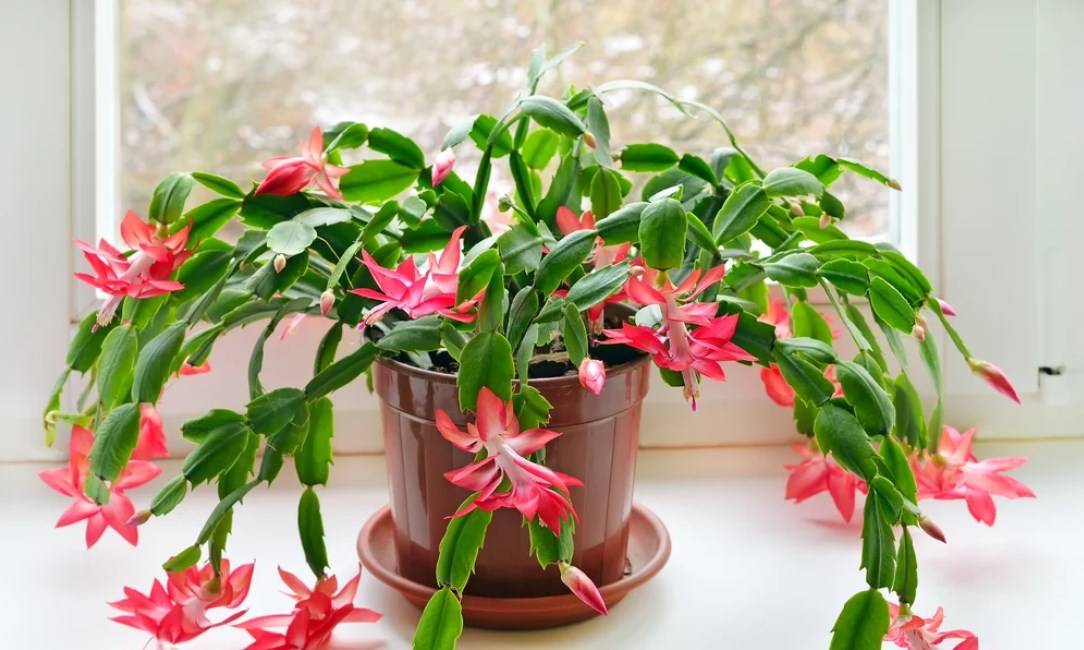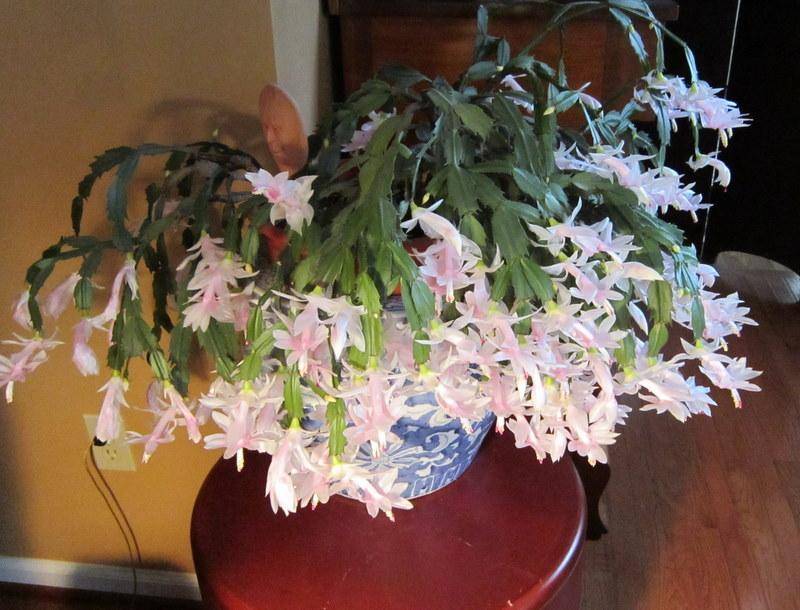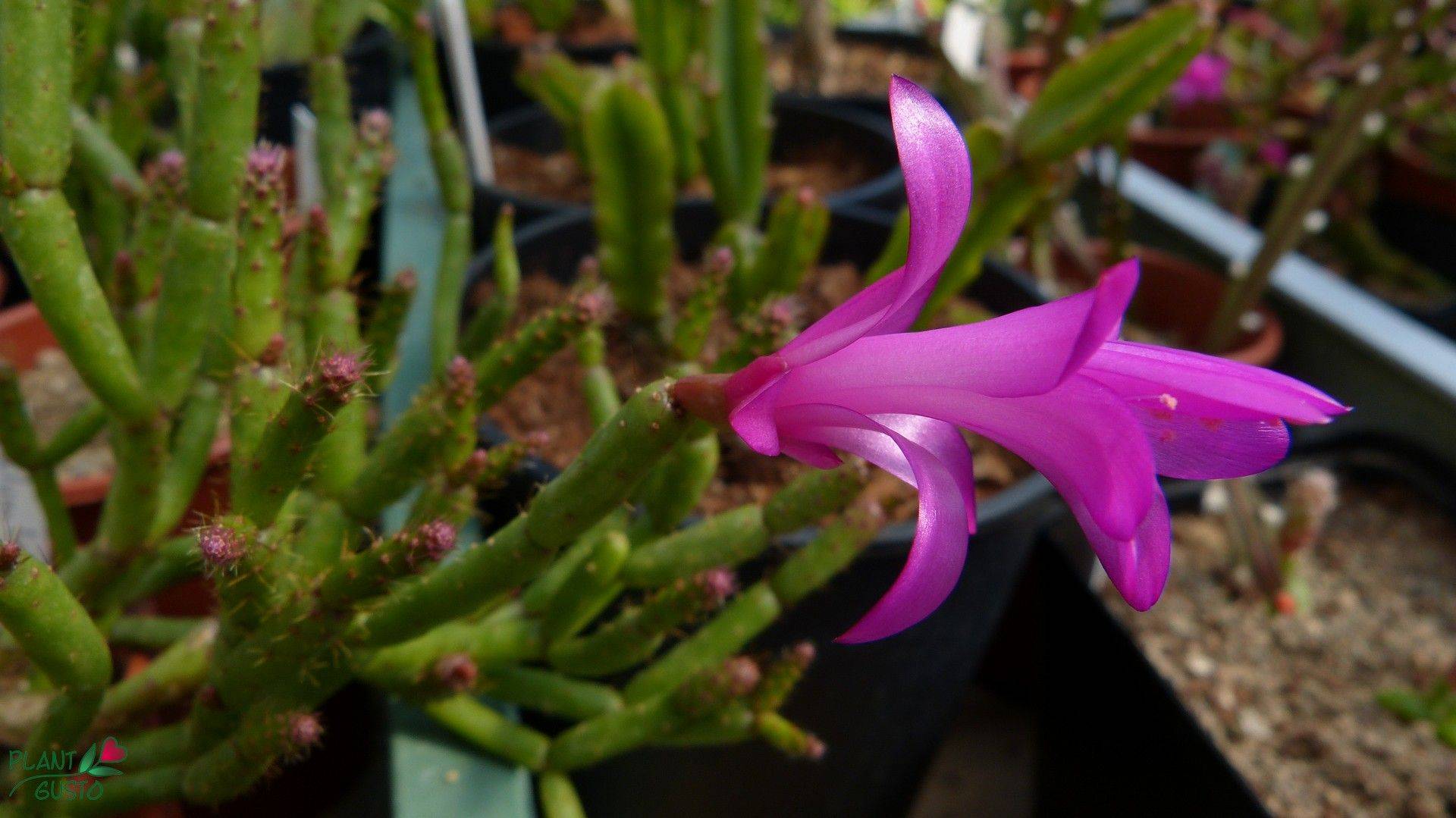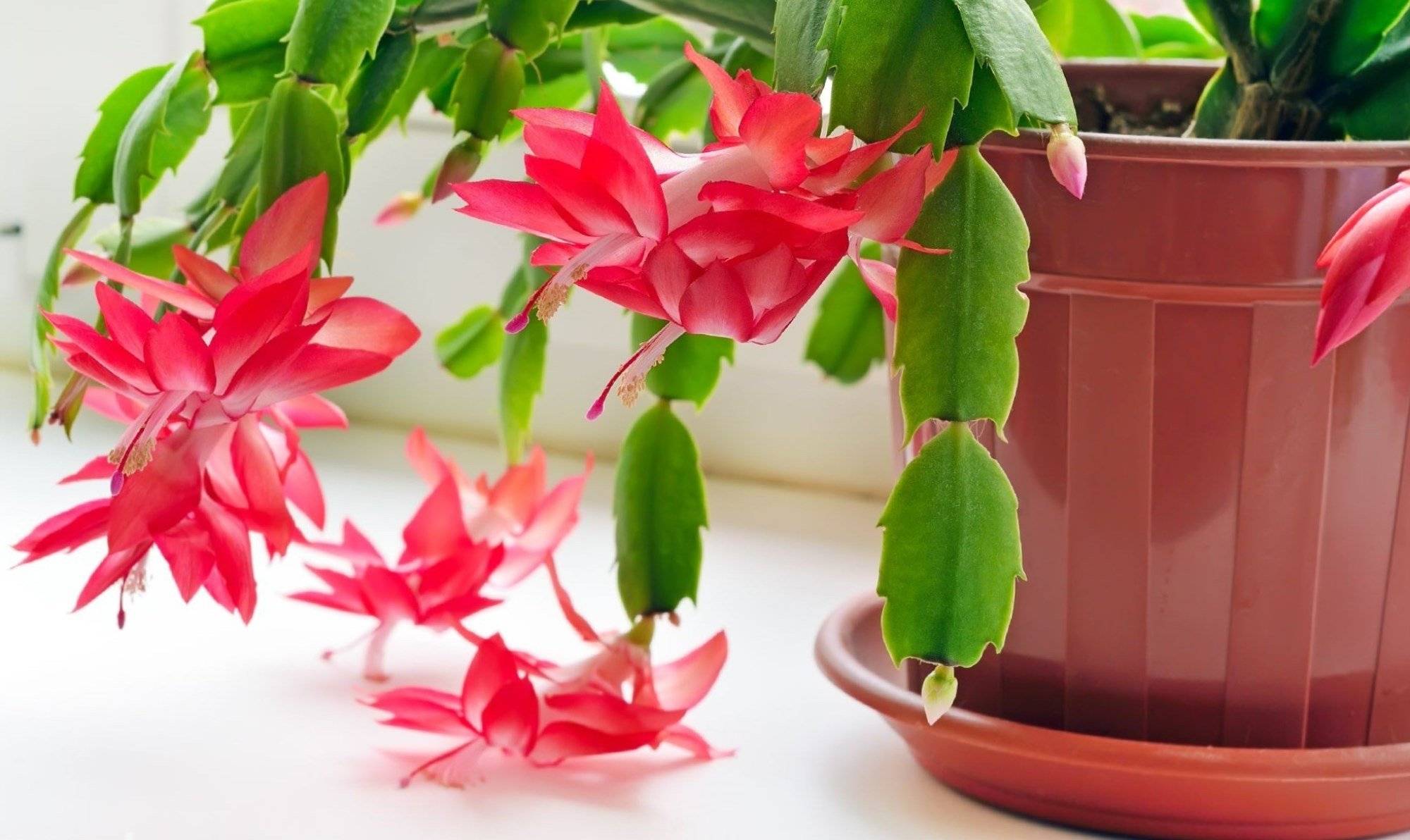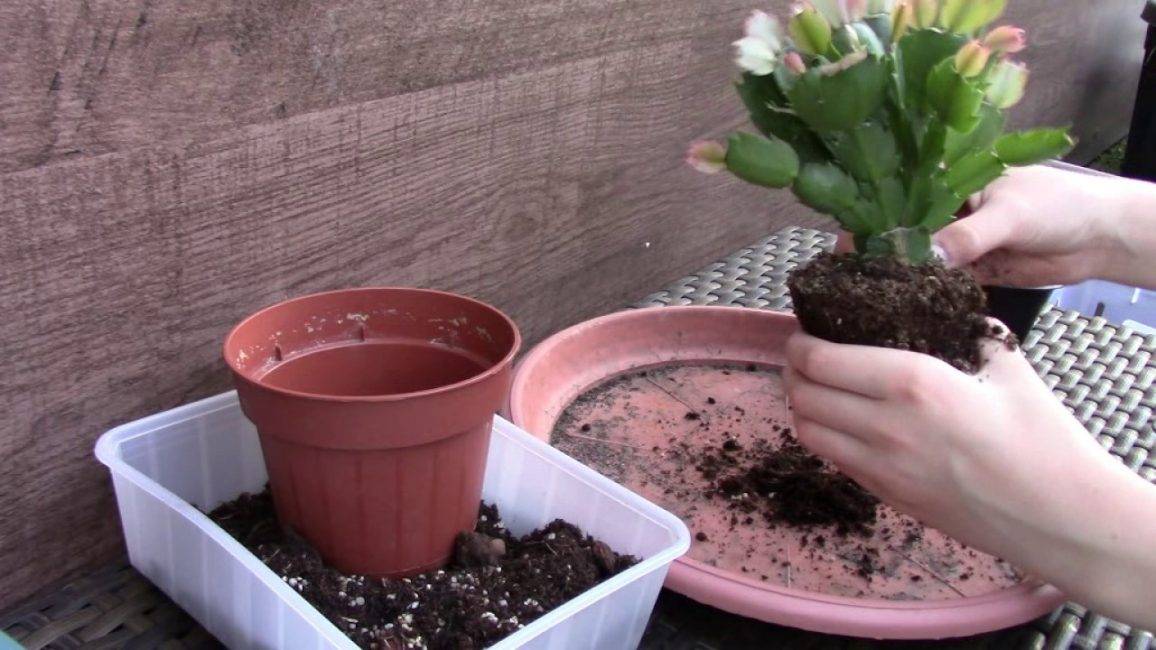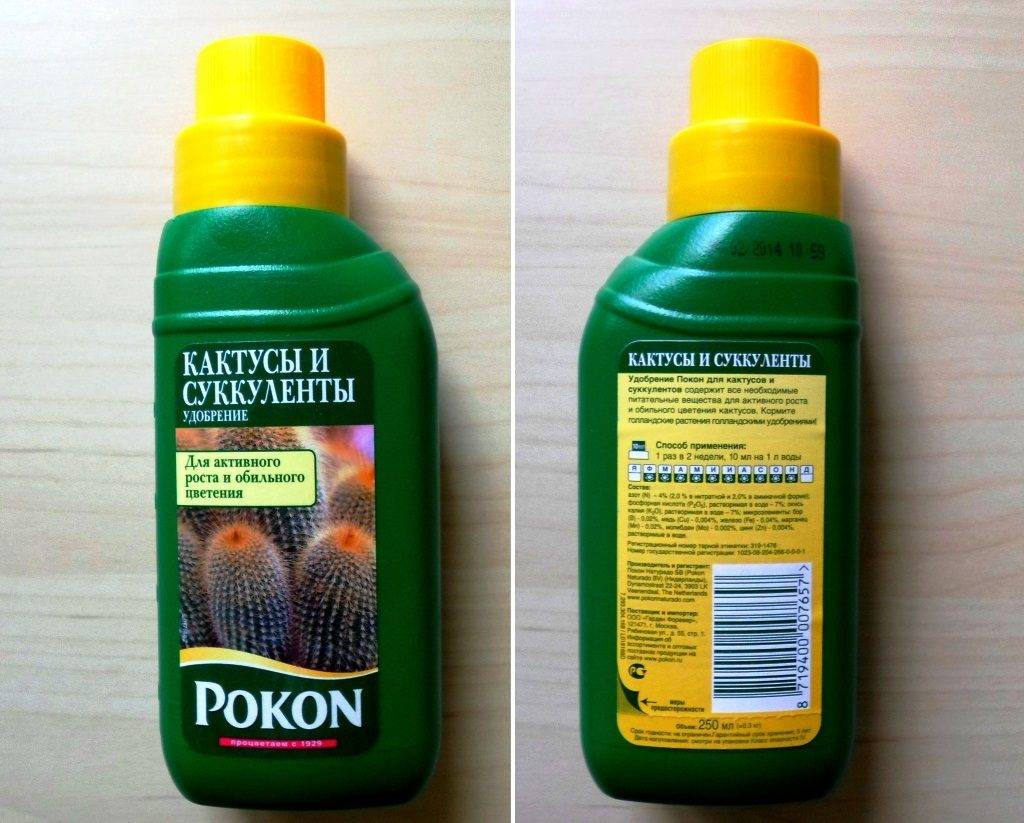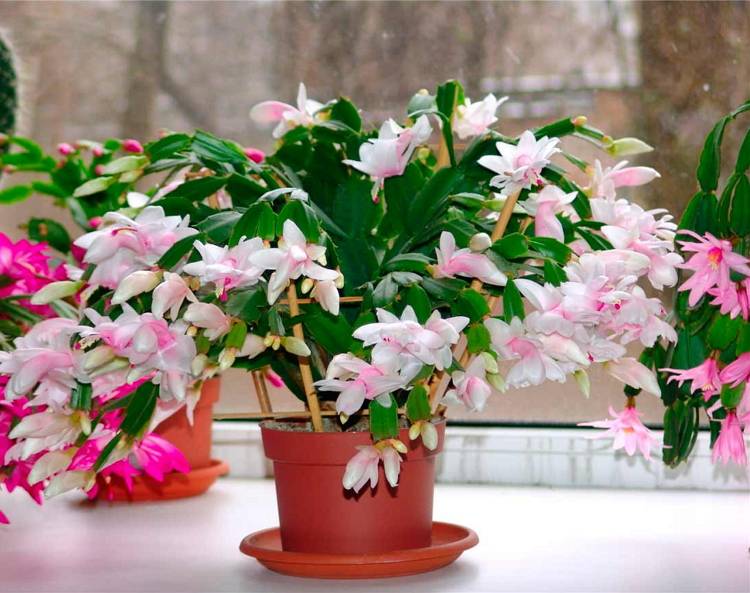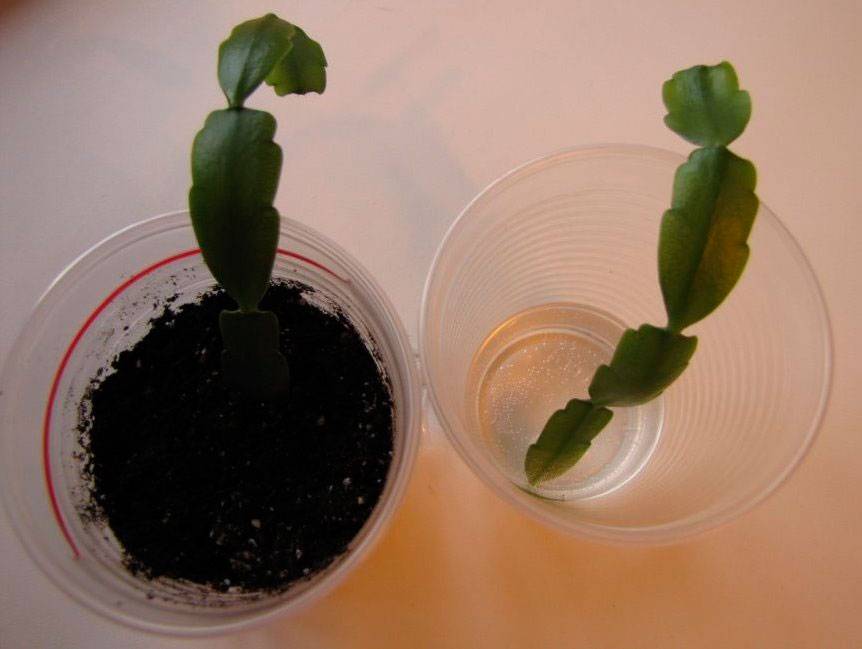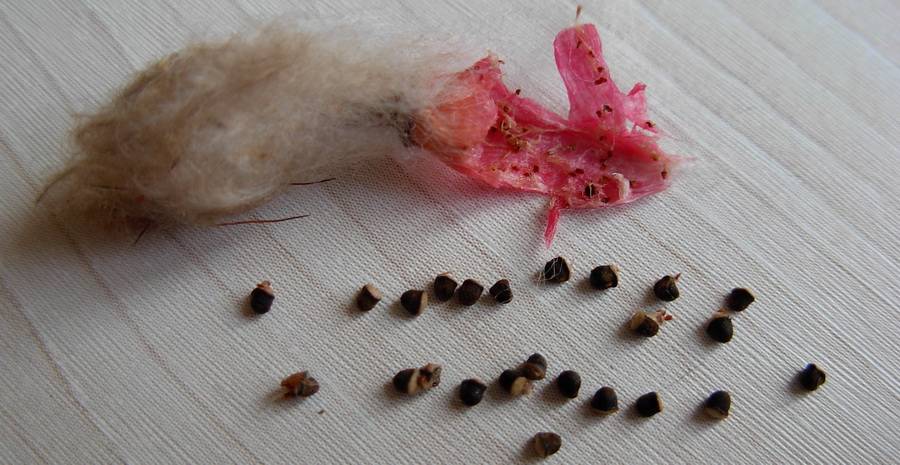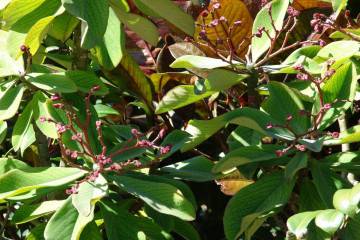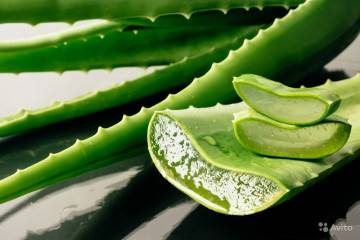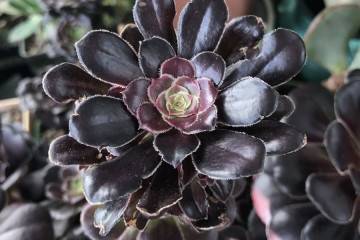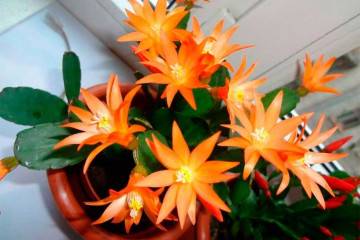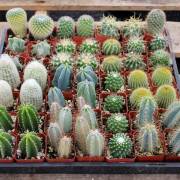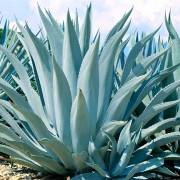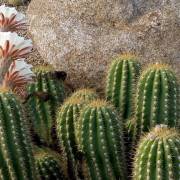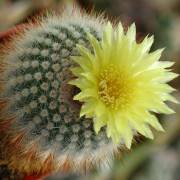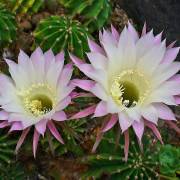Schlumberger home care: basic principles of plant maintenance
Content:
The Schlumberger flower or ridge cactus is a representative of succulents, which is famous for its good health and unpretentious cultivation. Subject to agrotechnical requirements, an ornamental plant pleases its owner with a lush, beautiful and long flowering, which occurs mainly in the cold season.
Popular types and varieties of Schlumberger cactus
Schlumberger's Decembrist popularly has many other names, for example, zygocactus or Christmas tree. It is formed in the form of a small spreading bush, consisting of soft shoots. Flowers are formed at the ends of the twigs. Depending on the variety, the color of the petals can be bright orange, white, pink, scarlet.
Schlumberger's bookle
The plant has another common name - Schlumberger Buckley. It is a classic zygocactus. This plant can be found in almost every apartment. The length of the stems can reach 0.5 meters.
The color of the jointed shoots is light emerald. Flowers are formed in large sizes. In length they can reach 3-5 cm. Duration of flowering from the beginning of winter to the beginning of spring.
Schlumberger white
There is another common variety called White Christmas. He gained popularity due to the snow-white color of the flowers. A characteristic feature of the species is that the petals have a slightly wavy shape. The leaves are deep green in color, the structure is rather fleshy. This is a hybrid variety.
The color of the petals depends on the room temperature. If the house is not very warm, then pink shades prevail in the color of the petals.
Other
Of the other varieties of indoor plants, such varieties as Schlumberger mix, truncated and opunaceous, deserve attention:
- Opuntia cactus. This plant cannot be confused with any other species. A characteristic feature is strongly branched shoots. The segments look like rounded flat plates. Their surface is covered with needles, like an ordinary succulent. The flowers are in the shape of an elongated tube surrounded by petals.
- Truncated grade. The leaves of this variety have an unusual beveled rectangle shape. Sharp protrusions are formed at the ends of the segments. In terms of popularity among domestic flower growers, this variety takes an honorable second place after the type of boucle.
Decembrist Schlumberger: home care
The Decembrist is a species of forest cacti that thrive in partial shade or shade. It is recommended to put a pot with a plant on a windowsill located on the north, west and northwest sides.
Planting and transplanting should be carried out in a container with loose soil. It is also highly recommended to maintain an acidic environment. The soil must necessarily contain sod land, sand, sour peat in a ratio of 1: 1: 1.You can use not sand, but vermiculite for looseness, but a small piece of moss to maintain the optimal level of moisture and acidity. A thick drainage layer is required at the bottom of the pot.
You need to transplant a houseplant only in the spring at a frequency of once every 2 years. It is important that the dimensions of the new container are not much larger than the previous one. If you use too large a pot, then the plant will not bloom for several years until the roots have mastered the entire land ball.
Basic recommendations for transplant:
- First you need to choose a container for planting. It should be reasonably wide and necessarily stable.
- Next, you need to prepare a substrate suitable for the plant.
- A thick layer of drainage is made at the bottom (gravel, pebbles and clay fragments), an earthen substrate is poured over the drainage layer.
- The rooted plant is carefully removed from the old pot. The culture must first be watered so that there are no difficulties during extraction.
- The rhizome is examined for damage, dead fragments, and decay.
- After planting, the culture is watered abundantly.
It is not recommended to abuse it with watering; the procedure should be repeated as the soil surface dries out. Starting at the end of summer, the frequency of watering is reduced, due to which the process of setting flower buds begins. An indispensable condition for keeping a plant is the regular introduction of mineral dressings.
Blooming cactus
The Decembrist received this name for the reason that it begins to bloom with the arrival of winter. But he begins to prepare for the formation of kidneys in the summer. At the end of September, the plant hibernates.
It is important for a flower grower to know about all life cycles of a plant and to care for it, taking into account the characteristics of the flow of each.
From September to November, the culture should be in a room where the temperature regime ranges from + 17-19 degrees. There is practically no need to take care of it, the main thing is to water it regularly and not create stressful situations. In the second half of November, it is recommended to rearrange the plant in a room where the temperature is already above +20 degrees. As soon as the room is warm, the buds will begin to pour literally before our eyes.
Each variety has a slightly different flowering period and duration. Tentatively, under favorable conditions, the culture blooms from November to January.
Schlumberger breeding options
Most often, the plant is propagated at home by cuttings. Previously, it is required to unscrew several "extreme" links from the stem, then dry them a little, leaving them in the fresh air for several days. Next, the prepared planting material is planted in a moistened substrate and a greenhouse effect is created using a transparent glass jar or a cut plastic bottle. The optimal temperature regime is not higher than + 15-20 degrees. To avoid the development of fungal diseases, the plants must be ventilated every day.
There is also a seed reproduction method, but it is not very much in demand due to its laboriousness.As a rule, it is used by breeders to obtain healthier exhibits and to develop new varieties.
After acquiring or collecting high-quality seed, it is placed in a weak solution of potassium permanganate (manganese) shortly before planting. The next step is to spread the seeds on the surface of the soil, pre-moistened. The first shoots will appear after 10-14 days. Under favorable conditions, young plants already dive in 3-3.5 months.
Schlumberger's zygocactus is a common home-grown ornamental plant. Such popularity is due to excellent decorative qualities, unpretentiousness in care and cultivation.
